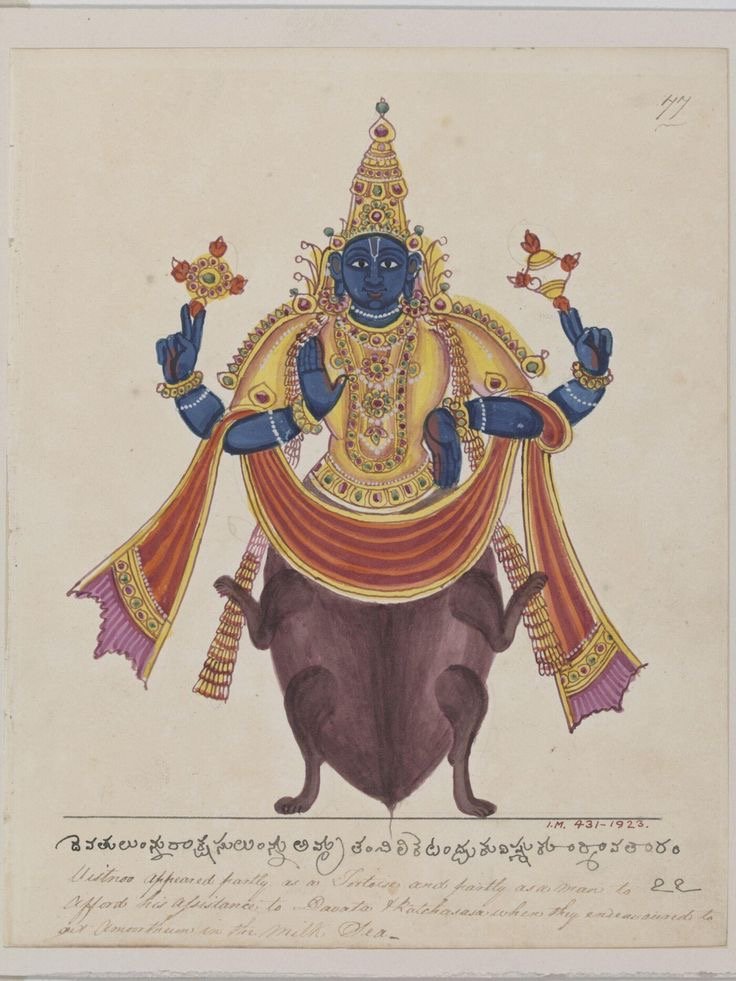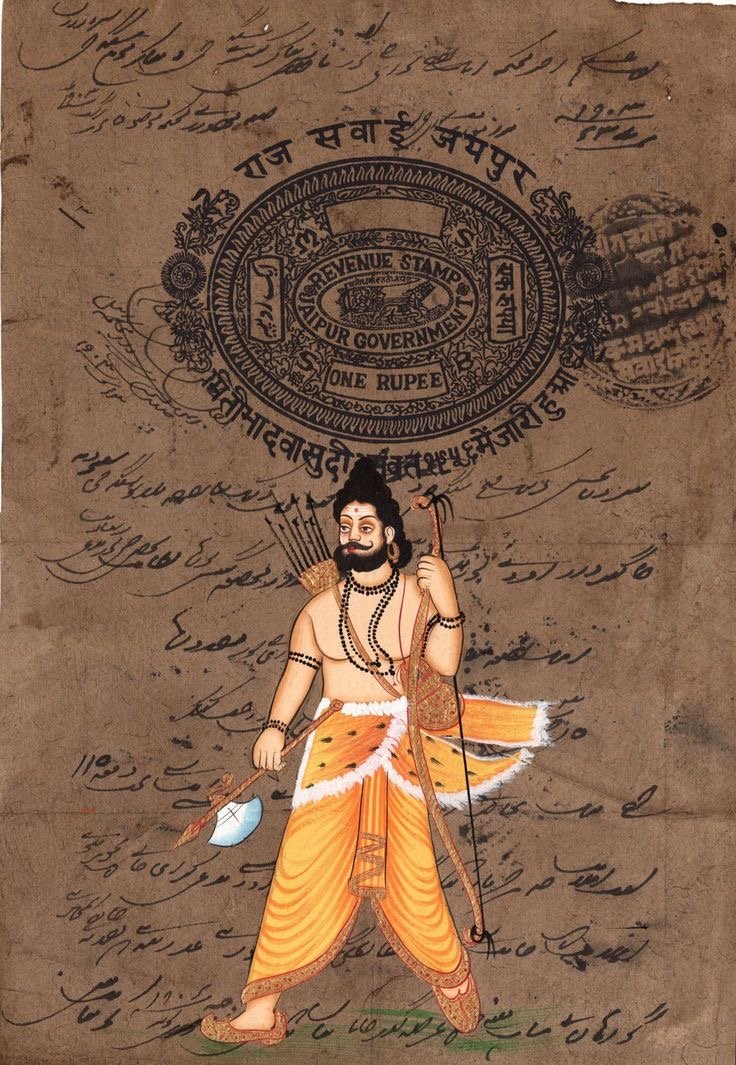Navigating Aquarius and Leo: Rāhu and Ketu's New 18-Month Cycle
Artwork: Ayush Kejriwal
May 19, 2025 – December 5, 2026
Shadow Forces at the Threshold
In the subtle architecture of destiny, not all thresholds are lit by stars—some are cast in shadow. Rāhu and Ketu, the lunar nodes, are such thresholds: unseen forces that awaken, dismantle, and initiate. They do not emit light, yet their influence reshapes the sky within.
The jyotiṣa narrative shifts as the nodes complete their backward journey from the Pisces–Virgo axis into Aquarius–Leo. This new cycle, initiated on May 19 (true node shift on May 29), will reverberate through the end of 2026.
Sovereignty and Service
This is the axis of sovereignty and service—Leo illuminates the light of the self, while Aquarius holds the vision for the collective. One radiates from the heart; the other disperses through the field. The invitation is not to choose between them, but to consecrate their union.
Mechanics of the Nodes
Unlike the visible grahas, Rāhu and Ketu are chāyā-grahas—shadow planets formed by the intersection of the Sun and Moon’s paths along the ecliptic. Ever retrograde and 180 degrees apart, they govern eclipses and set the karmic tone of each 18-month cycle, shaping the undercurrent of the six-month intervals between eclipses.
Known as the great awakeners, they mark the dance between light and shadow—disrupting patterns, awakening deeper truths, and exerting particular influence when transiting one’s Lagna or Moon Nakṣatra (constellation).
Echoes of the Past: 2005–2007
Artowrk: Pinterest
Let us return to the last time Rāhu and Ketu moved through the Kumbha–Siṃha axis: 2005 to 2007. It was a period shaped by the tension between personal sovereignty and collective belonging—between the need to stand apart, and the yearning to find one’s place within a greater whole.
Rāhu in Kumbha stirred the impulse to question systems and seek new forms, while Ketu in Siṃha quietly loosened the grip of self-importance, revealing where identity had been entangled with status or validation. As one of the co-rulers of Kumbha, alongside Śani, Rāhu moves through this sign with a certain authority—its drive to rupture, innovate, and unbind finds natural expression here. For many, it was a time of inward reorientation—of discerning what it truly means to offer oneself without needing to be seen.
Timing Matters: Mean and True Node Gap
In that cycle, the difference between the mean and true node transitions was pronounced. The mean node entered Kumbha in November 2005, while the true node did not follow until March 2006—resulting in a gap of nearly four months.
This delay was due to greater oscillation in the Moon’s nodal path at the time, which caused the true node to temporarily move direct or hover near the sign boundary. In contrast, the 2025 transit is far more aligned: the mean node enters Kumbha on May 9, 2025, and the true node follows just ten days later on May 19. The shorter gap reflects minimal oscillation in the nodal path during this period, resulting in a more immediate and unified shift.
This convergence in 2025 holds deeper significance for Jyotiṣa interpretation:
While the true node reflects the Moon’s exact astronomical path, including its erratic oscillations, the mean node offers a steady, symbolically coherent trajectory through the zodiac. During periods of minimal oscillation—such as the 2025 transit—the closeness between mean and true nodes lends further support to the mean node’s use in timing and interpretation. Many Jyotiṣa practitioners favor the mean node for its predictive consistency and alignment with the symbolic essence of Rāhu and Ketu as karmic forces that operate beyond the visible realm.
In traditional South Indian lineages, the mean node remains the standard—a practice that reflects its longstanding alignment with the metaphysical dimension of Jyotisa rather than only astronomical precision.
Clean Threshold, Swift Delivery
Most discussions of Rāhu and Ketu focus on their symbolism, yet their movement itself tells us something. In 2005–2006, the true node lagged nearly four months behind the mean, creating a prolonged liminal space. The karmic axis had shifted—yet hadn’t. This delay, subtle as it was, mirrored a period of energetic diffusion: slower integration, ambiguous thresholds, and karmic delivery that unfolded in layers.
In contrast, the 2025 shift occurs with near exactness. The true and mean nodes enter Kumbha–Siṃha just ten days apart. When the nodes move with precision, karma tends to deliver without pause. There is less wavering at the threshold, and the cycle begins cleanly. Have you been noticing a quickening? A sense that movement has already begun—subtle shifts, sudden truths, old patterns unraveling without ceremony. The timing may be astronomical, but the delivery is already in motion.
First full eclipse season in the Aquarius / Leo Axis:
Sept 7th: Total Lunar Eclipse 13:09pm CT (full moon) Pūrva Bhādrapadā
Sept 21st: Partial Lunar Eclipse 14:55 CT (new moon) UttaraphalgunĪ
Mythic Origins
According to ancient Vedic mythology, Rāhu and Ketu were born during the churning of the cosmic ocean (Samudra Manthana). The devas, with Viṣṇu’s help, plotted to keep the nectar of immortality (amṛtṭa) for themselves. In response, the asura Svarbhānu disguised himself as a deva and slipped into their ranks. Just as he drank the nectar, the Sun and Moon exposed him. Viṣṇu beheaded him with his Sudarsana Chakra.
The drop of nectar had already passed his throat, making him immortal. His severed head became known as Rāhu, the immortal head; his body became Ketu, the headless body. Feeling betrayed by the luminaries, the nodes are said to chase and devour them again and again—causing eclipses (grahaṇa) that continue to fascinate and unsettle us to this day.
The Hero’s Journey: Varāha and Matsya
To understand Rāhu graha a little more, we can look to the narrative of the hero’s journey and to the life of Varāha Avatār, the third incarnation of Lord Viṣṇu, the wild boar. Varāha Dev story narrates how Viṣṇu came to rescue Bhūdevī (Earth) and restore her to her rightful place in the universe.
Rāhu is the karaka for justice, courage, truth, self-sacrifice, renovation, risking one’s life for a cause, going against the established order, the foreigner, and the protector of the Earth. As the immortal head, Rāhu is the head of everything. With his tusks, Varāha is said to have the ability to dig up any impurities in the heart.
Ketu Graha is reflected in the veiled presence of ŚrĪ Matsya, the first avatāra of Viṣṇu—the fish who guides the sage Manu through the great deluge (pralaya). When he first appears to King Satyavrata, pleading for protection from the larger creatures of the sea, it signals a dissolution already underway. As creation gets out of hand, Matsya carries forward only a small volume of the Earth’s population—preserving what must endure, while the rest is surrendered.
Ketu is the karaka of mokṣa and the genetic code—what sets one apart, like the royal class. He is the writer, the one behind the scenes, the backdrop. Karaka of the ṛṣis, omens, sūkṣma indriyas (subtle senses), extremity, religious fanatics, blind faith, mystery, secrets, coding, and reduction. He is the reducer, the one that clears the field, cuts the thread, and clears out your closet. Mahākāya—he expands something only to get it out of the way. Like Matsya, he does not engage in violence.
Upcoming Transits
Rāhu (Mean Node)
Currently in: Pūrvabhādrapadā (Aquarius)
Entering Shatabhiṣak: November 22, 2025
Entering Dhaniṣṭhā: June 30, 2026
Even though Rāhu has entered Kumbha (Aquarius rāśi) on May 19, 2025, it's still transiting within the earlier Pūrvabhādrapadā Nakṣatra, which spans the end of Mīna and the beginning of Kumbha. This is why, despite the rāśi shift, the Nakṣatra hasn't changed yet.Rāhu in Pūrvabhādrapadā intensifies the fire of transformation. Known for its scorching, untamed energy (pari), this star initiates deep internal alchemy through tapas—discipline, vision, and inner combustion. It is a place of conscious rebirth. Under Rāhu’s influence, the latent fire of Pūrvabhādrapadā becomes insatiable, requiring full devotion to one’s goals and the courage to burn through illusion. What is not aligned will not survive the heat.
Artwork: Pinterest
Ketu (Mean Node)
Currently in: Uttaraphalgunī (Leo)
Entering Pūrvaphalgunī: July 6, 2025
Entering Maghā: April 20, 2026
Ketu in Uttaraphalgunī draws attention to the unseen threads within relationships, contracts, and sacred service. This is the star of patronage—where prosperity flows through bonds rooted in integrity, hospitality, and selfless offering. With Ketu here, the outer structures may dissolve, but the deeper intent behind partnership is revealed.
Artwork: Pinterest
It's a time to refine the purity of our commitments, honor agreements, and serve from the heart without attachment to recognition or reward. True wealth arises through inner alignment and grace-bearing acts.
May this cycle of shadows illuminate what is essential. May what is ready to dissolve be released with grace. And may the unseen forces guide you inward—toward your own becoming.
All My Relations, Tulsi
ॐ रां राहवे नमः । ॐ कें केतवे नमः
















